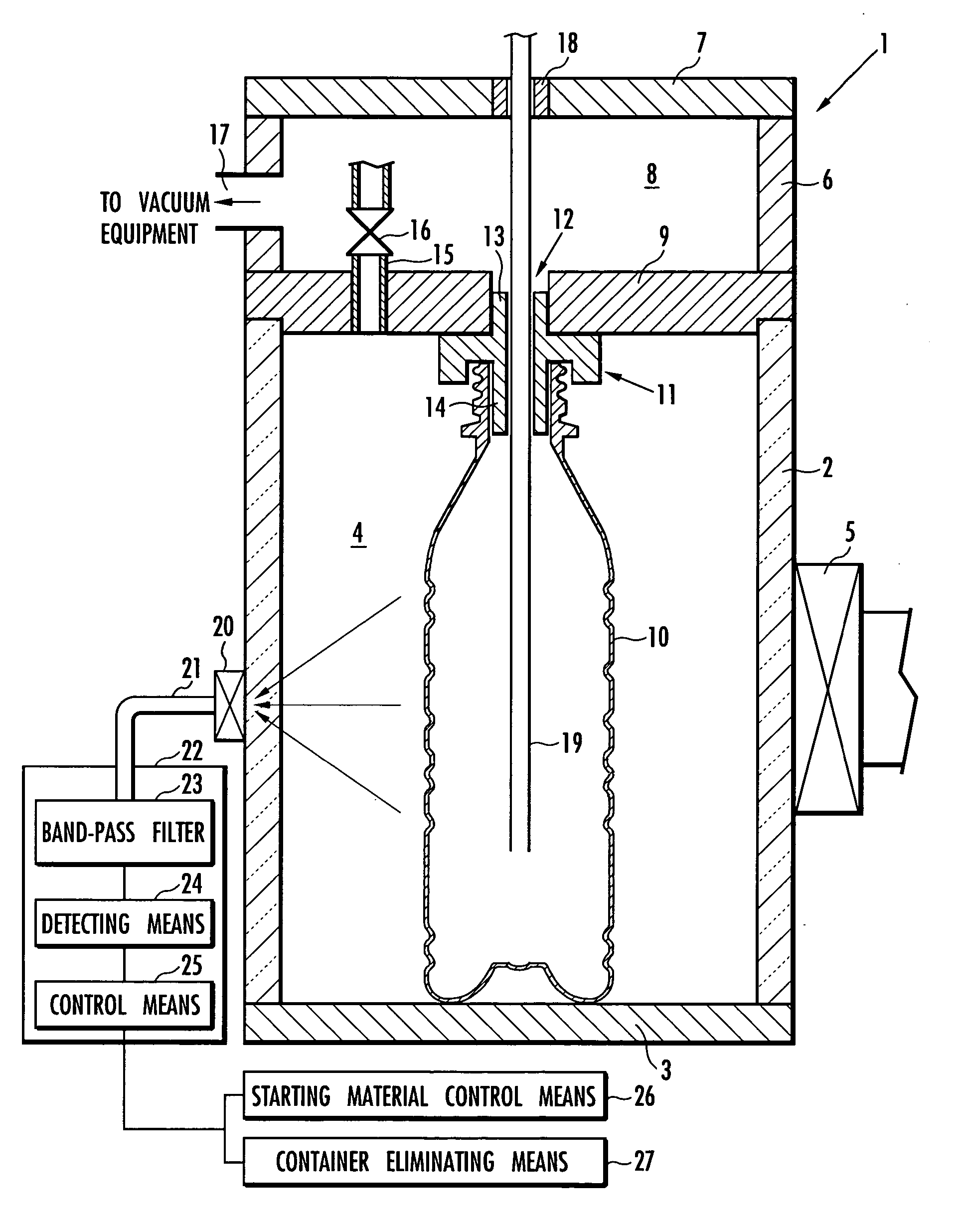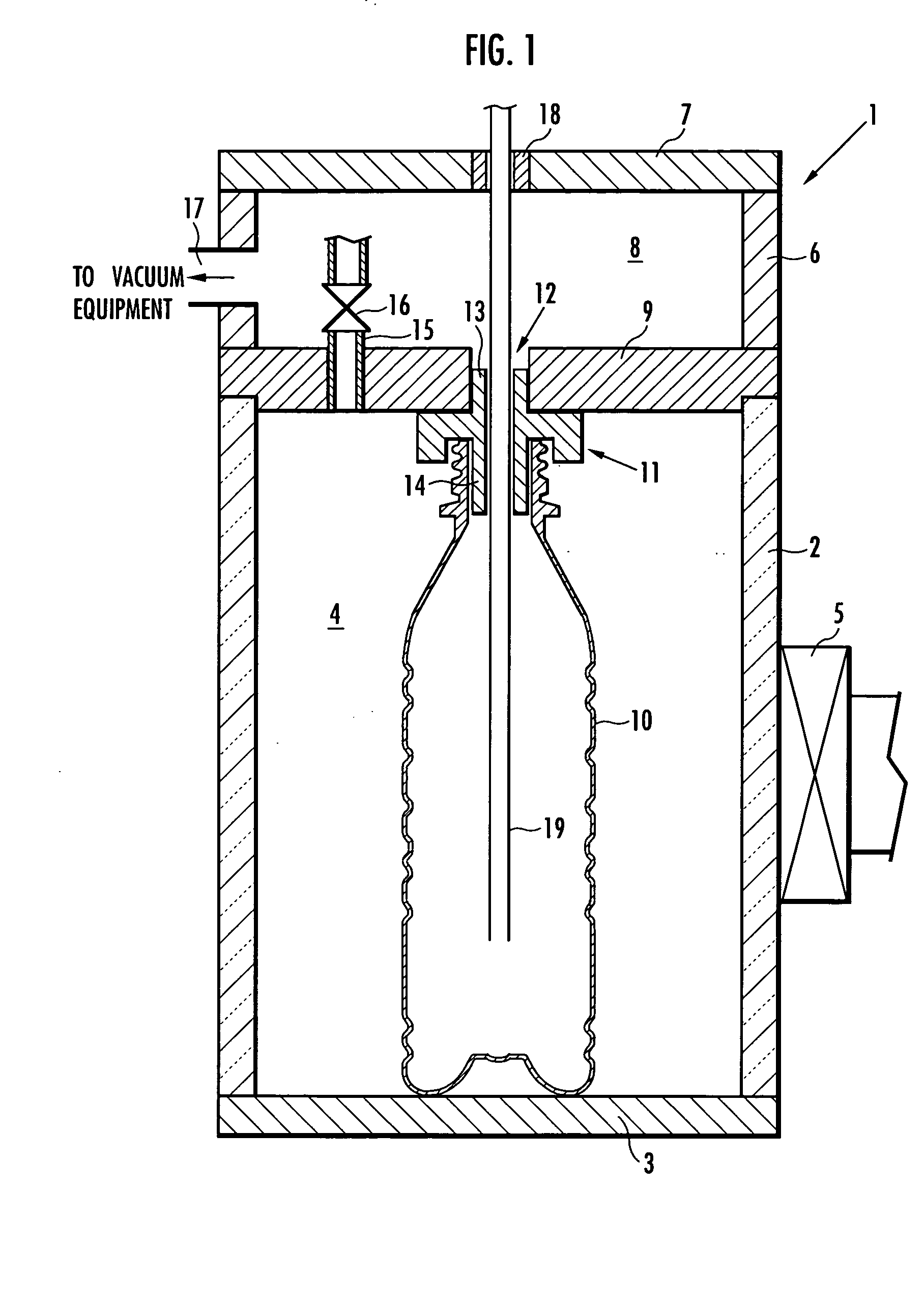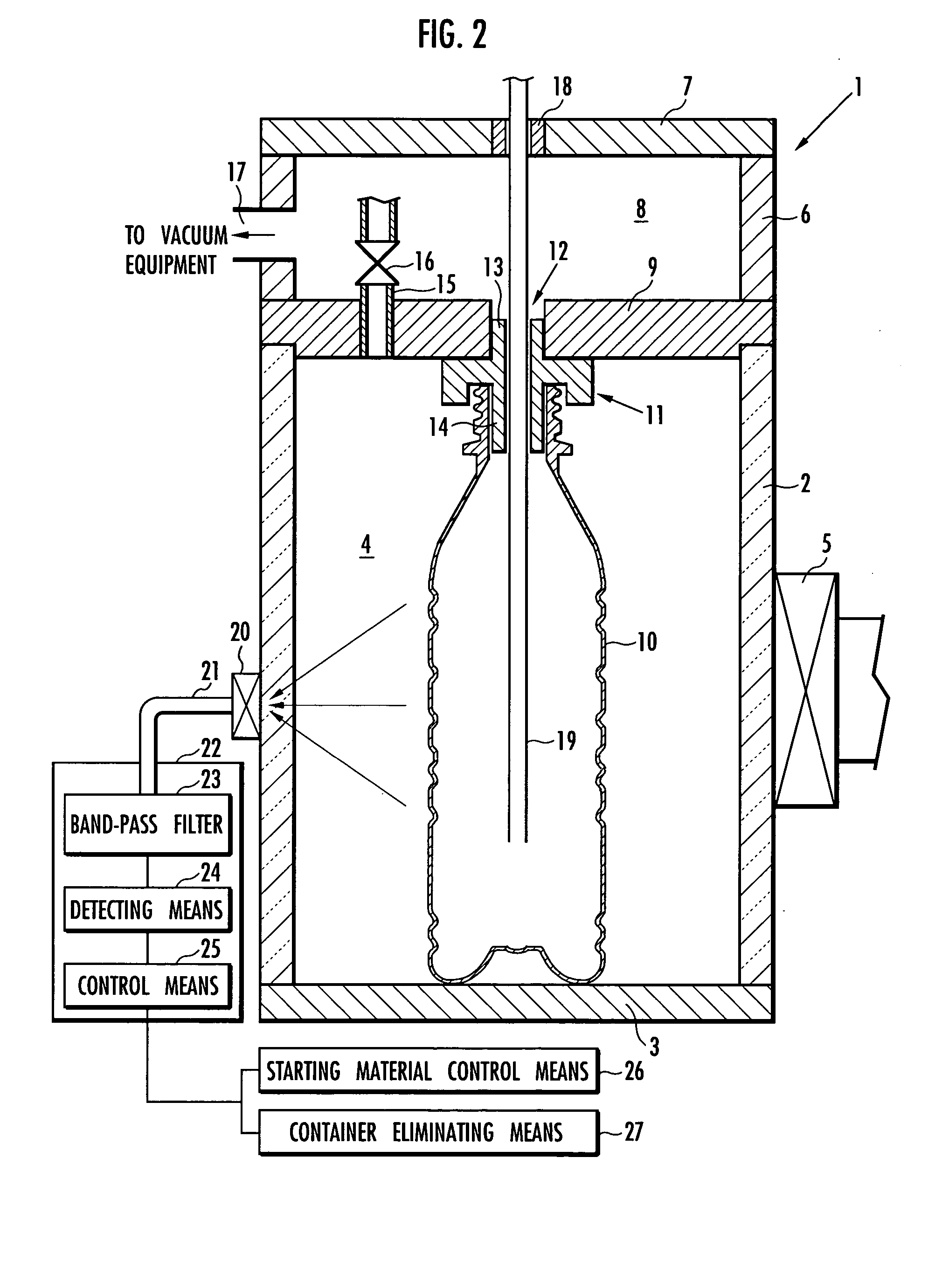Plastic containers coated on the inner surface and process for production thereof
a technology of plastic containers and inner surfaces, applied in the field of plastic containers, can solve the problems of inferior gas barrier properties, deterioration of adhesiveness of the film to the plastic container, and light weight of the plastic container, and achieve the effect of reducing gas barrier properties and superior gas barrier properties
- Summary
- Abstract
- Description
- Claims
- Application Information
AI Technical Summary
Benefits of technology
Problems solved by technology
Method used
Image
Examples
example 1
[0094] The present example used the plasma CVD apparatus 1 illustrated in FIG. 1 to manufacture a 350 ml PET bottle having its inner surface coated with amorphous carbon film.
[0095] At first, according to the present example, the PET bottle 10 was stored in the processing chamber 4 of the plasma CVD apparatus 1 illustrated in FIG. 1, and the processing chamber 4 was decompressed to reduce the pressure inside the PET bottle 10 to a vacuum degree of 10 Pa. Next, a material gas composed of acetylene gas was fed into the PET bottle 10 at a flow rate of 0.4 sccm / cm2 with respect to the inner surface area of the PET bottle 10, and microwaves of 2.45 GHz and 380 W was radiated for 0.6 seconds while maintaining the interior of the PET bottle 10 to the vacuum degree of 10 Pa.
[0096] As a result, a PET bottle 10 having an amorphous carbon film with a thickness of 0.04 μm (400 angstrom) coated on the inner surface was obtained.
[0097] Next, the PET bottle 10 obtained according to the present ...
example 2
[0105] According to the present example, a 350 ml PET bottle 10 having an amorphous carbon film with a thickness of 0.04 μm (400 angstrom) coated on the inner surface was formed under exactly the same conditions as example 1, except that a mixed gas containing acetylene gas as material gas and air was fed into the PET bottle 10 as gas components. The mixed gas was supplied by feeding the material gas into the PET bottle 10 at a flow rate of 0.4 sccm / cm2 with respect to the inner surface area of the PET bottle 10, and feeding air together with the material gas at a flow rate of 0.035 sccm / cm2.
[0106] At this time, since the ratio of nitrogen to oxygen in the air composition nearly equals 8:2, the oxygen gas in the mixed gas corresponds to 1.6% by volume to the total amount of gas components fed into the PET bottle 10, and the total amount of nitrogen gas and oxygen gas corresponds to 8% by volume thereof.
[0107] Next, the ratio of the number of nitrogen atoms or the number of oxygen ...
example 3
[0108] According to the present example, a 350 ml PET bottle 10 having an amorphous carbon film with a thickness of 0.04 μm (400 angstrom) coated on the inner surface was formed under the exact same conditions as example 1, except that a mixed gas containing acetylene gas as material gas and oxygen gas was fed into the PET bottle 10 as gas components. The mixed gas was supplied by feeding the material gas into the PET bottle 10 at a flow rate of 0.4 sccm / cm2 with respect to the inner surface area of the PET bottle 10, and feeding oxygen gas together with the material gas at a flow rate of 0.032 sccm / cm2.
[0109] At this time, the oxygen gas corresponds to 7% by volume of the total amount of gas components fed into the PET bottle 10.
[0110] Next, the ratio of the number of nitrogen atoms or the number of oxygen atoms to the number of carbon atoms in the amorphous carbon film and the oxygen transmission rate per bottle as an index of gas barrier property were measured for the PET bottl...
PUM
| Property | Measurement | Unit |
|---|---|---|
| Thickness | aaaaa | aaaaa |
| Thickness | aaaaa | aaaaa |
| Pressure | aaaaa | aaaaa |
Abstract
Description
Claims
Application Information
 Login to View More
Login to View More - R&D
- Intellectual Property
- Life Sciences
- Materials
- Tech Scout
- Unparalleled Data Quality
- Higher Quality Content
- 60% Fewer Hallucinations
Browse by: Latest US Patents, China's latest patents, Technical Efficacy Thesaurus, Application Domain, Technology Topic, Popular Technical Reports.
© 2025 PatSnap. All rights reserved.Legal|Privacy policy|Modern Slavery Act Transparency Statement|Sitemap|About US| Contact US: help@patsnap.com



